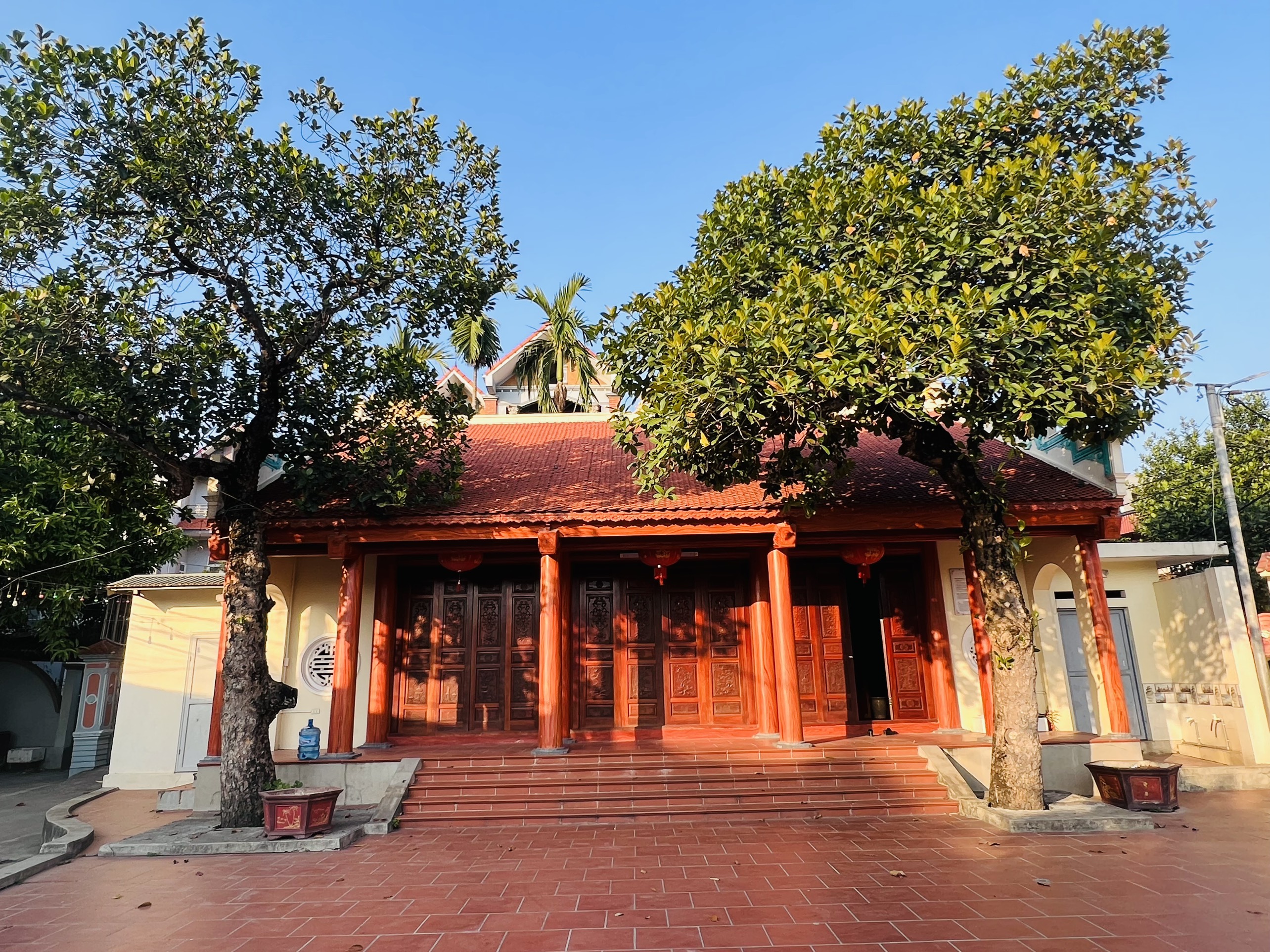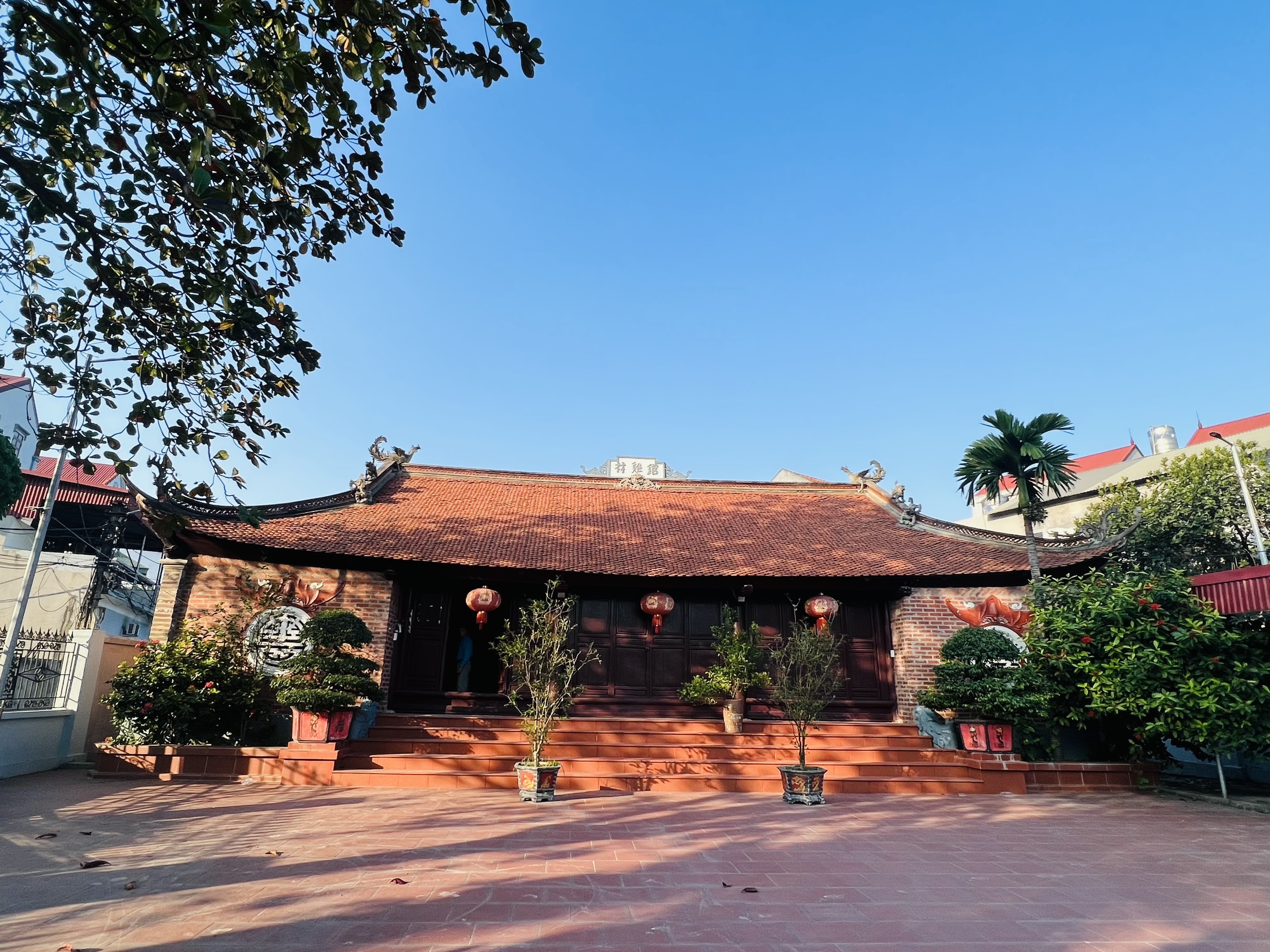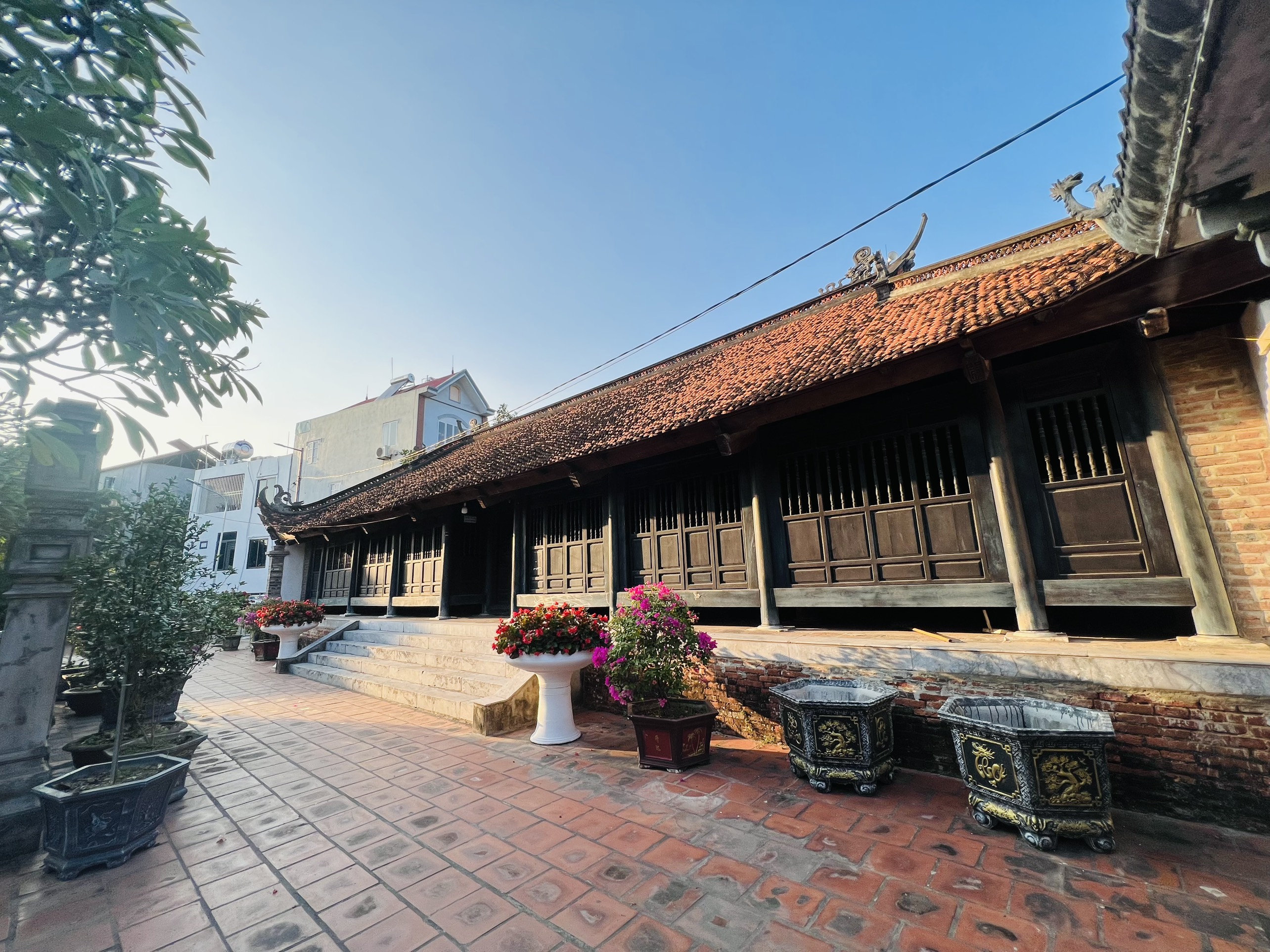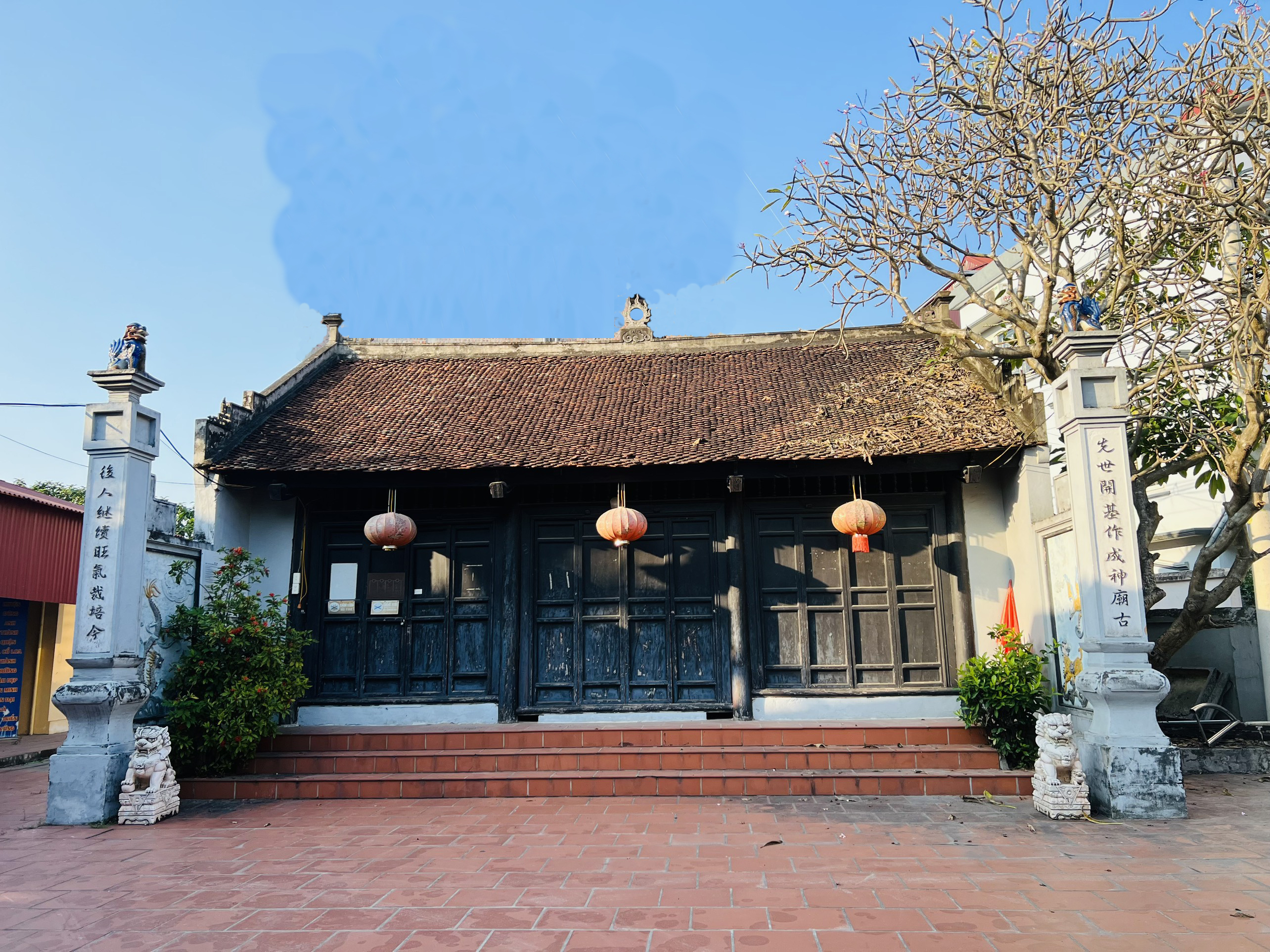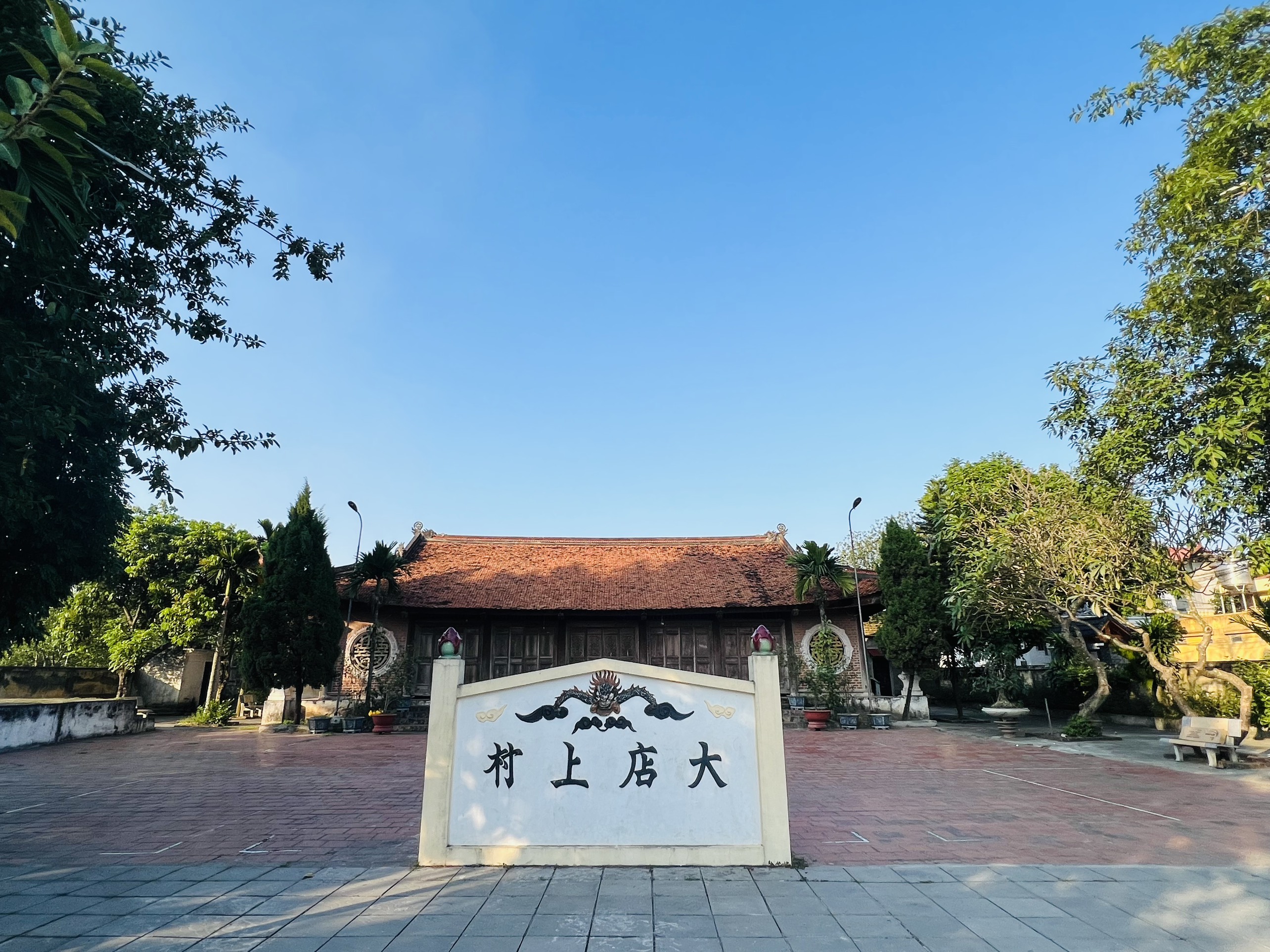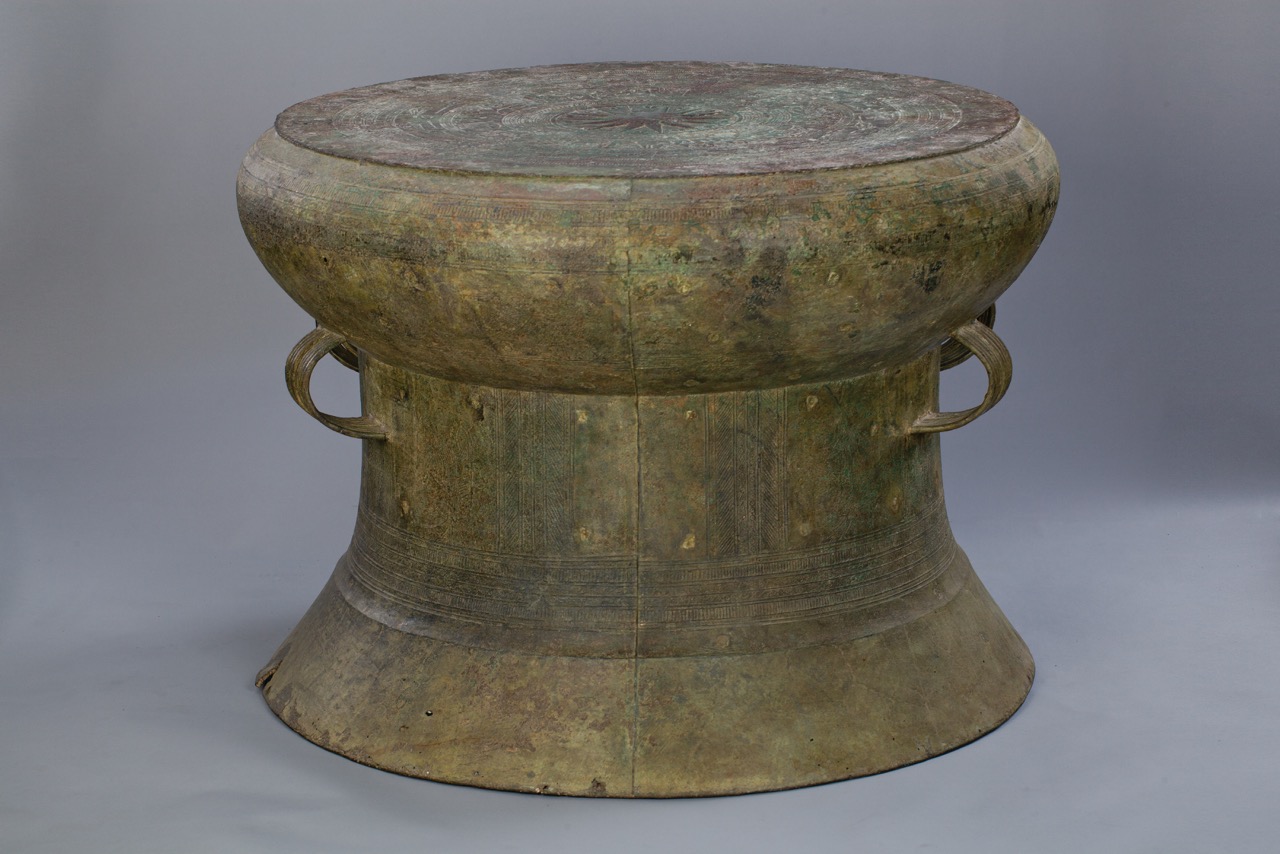
The Cổ Loa bronze drum was found in 1982 from Mả Tre site, of Chợ village, located to the southwestern side of the South Gate of the Cổ Loa Citadel, in between the Middle and Inner Ramparts. It had been buried upside down, containing nearly 200 artifacts inside such as a small part of the tympan, ploughshares, shovels, hoes, axes, spears, daggers, arrows, jars, coins, bronze crumbs, etc., which are dated to over 2,000BP. The Cổ Loa bronze drum and the group of the Ngọc Lũ, Hoàng Hạ, and Sông Đà bronze drums are those with the finest and oldest forms and designs in Việt Nam.
 The decorative designs in the centre of its tympan consists of a prominent star with 14 rays alternated by the peacock-feather designs in between. The sixth band of designs (from the centre) is equally divided into two halves, each of which includes ornamented human figures, a house image with a curved boat-shaped roof on which there is a bird, a female and male couple sitting opposite each other inside the house, a drum figure in sloping posture at one of its sides and a human figure in sitting posture at the other side, which depict a festival of the agricultural inhabitants for a lucky season.
The decorative designs in the centre of its tympan consists of a prominent star with 14 rays alternated by the peacock-feather designs in between. The sixth band of designs (from the centre) is equally divided into two halves, each of which includes ornamented human figures, a house image with a curved boat-shaped roof on which there is a bird, a female and male couple sitting opposite each other inside the house, a drum figure in sloping posture at one of its sides and a human figure in sitting posture at the other side, which depict a festival of the agricultural inhabitants for a lucky season.
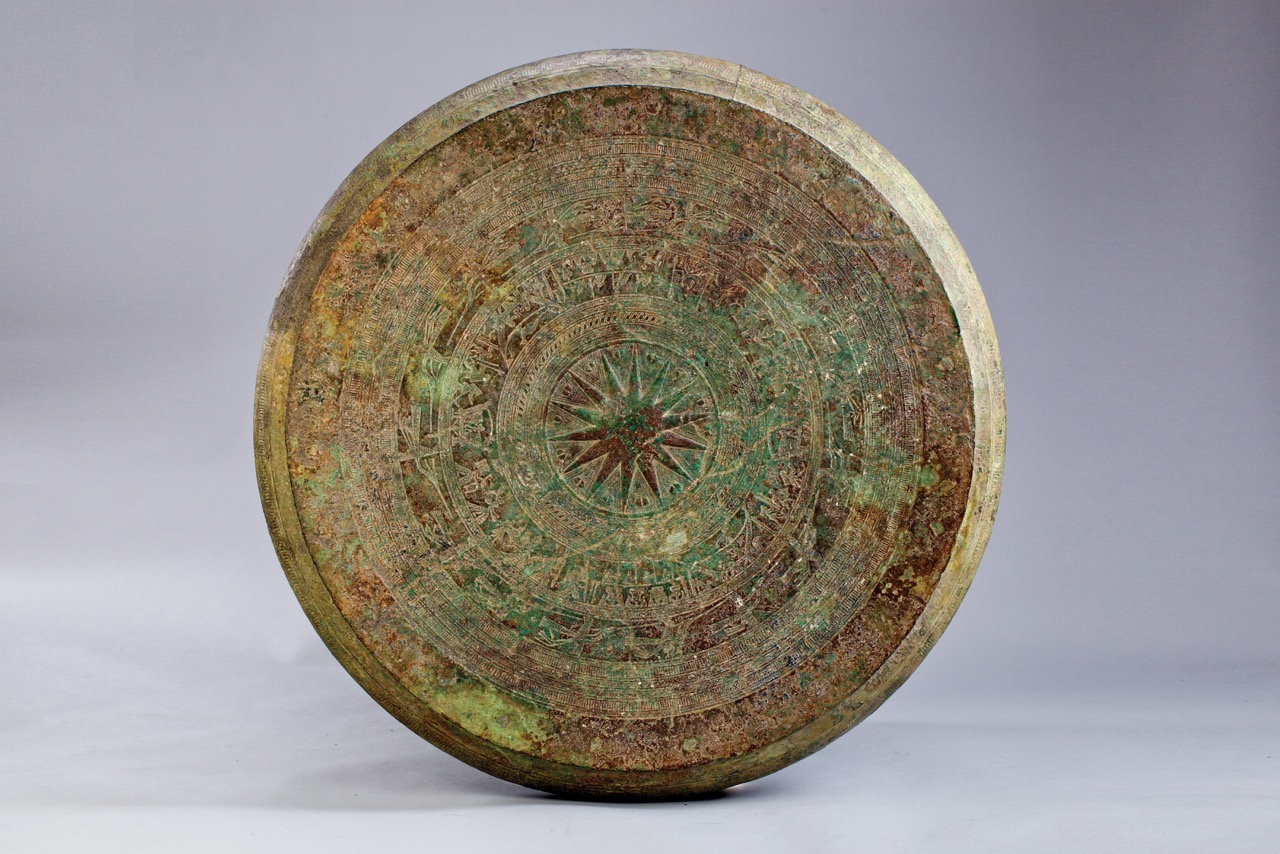 The bronze drum and the collection of bronze ploughshares found from Cổ Loa in 1982 are significant for the research into the national history in the period of foundation. On the 25 December 2015, these artifacts were recognized as national treasures in the Decision No. 2381 / QD-TTg signed by the Prime Minister.
The bronze drum and the collection of bronze ploughshares found from Cổ Loa in 1982 are significant for the research into the national history in the period of foundation. On the 25 December 2015, these artifacts were recognized as national treasures in the Decision No. 2381 / QD-TTg signed by the Prime Minister.
